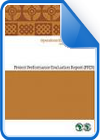
This report is based on four components: (i) an analysis of the various documents available; (ii) interviews with the key actors; (iii) field visits; (iv) direct observations at water supply points and latrines; and (v) a mini-survey conducted among the programme beneficiaries. The analysis is essentially based on a comparison between the current and pre-project situations.
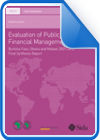
The evaluation of public financial management reform is one of several joint evaluations, undertaken under the umbrella of the OECD’s Development Assistance Committee, which are focused on issues identified as key for using country systems and where looking at donor assistance collectively makes more sense than trying to attribute results to a single actor. The evaluation involved three main components, a literature review (published in 2009) a quantitative study (published in 2011) and finally three country case studies. It is through the three cases – Burkina Faso, Ghana and Malawi – that the evaluation has been able to look in detail at the context and mechanisms that make PFM reforms successful.
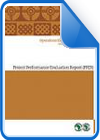
The Project Performance Evaluation Report (PPER) presents the findings of the independent evaluation of the Mpharane Bela Bela Upgrading Project in Lesotho. In January 2002, the Bank approved an ADF loan of UA 4.29 million to finance the upgrade of 25 km gravel road to bitumen standard between Mpharane, Bela Bela, also the spurs roads of St Theresa and Kolojane.
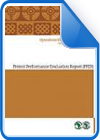
The assumptions and risks identified at appraisal showed that the adoption of IPM methods by farmers, lack of integration of initiatives at the regional level and frequency of rainfall deficits were limiting factors for the success of the project. However, the institutional mechanism put in place by the project, the management methodology based on the participatory and decentralized approach through the implementation units and village brigades, collaboration between research, extension and plant protection institutions in the four beneficiary countries as well as the distribution of villages across a wide range of rainfall isohyets were likely to mitigate this risk. The retrospective logical framework matrix in Annex 6 shows the specific risks concerning project implementation and sustainability
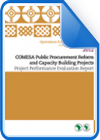
This document presents the Project Performance Evaluation Report (PPER) of the COMESA Public Procurement Reform Project (PPRP) approved in 2001 and completed in 2004, supplemented by the progress review to follow up the COMESA Enhancing Procurement Reforms and Capacity Project (EPRCP) approved in 2006 and planned for completion by December 2011.

This cover note contains a summary of the ‘Third Benchmarking Review of ECG Members Evaluation Practices for Their Private Sector Operations’1. The review was approved and subsequently released by the Evaluation Cooperation Group (ECG) in September 20102. The report presents the findings, conclusions, and recommendations regarding progress in harmonizing the mandates, policies, and practices of evaluation of private sector operations among members of the ECG. The main aim of this exercise is to identify the progress made so far towards harmonization by MDBs, and identify areas of shortfall in order to correct them.